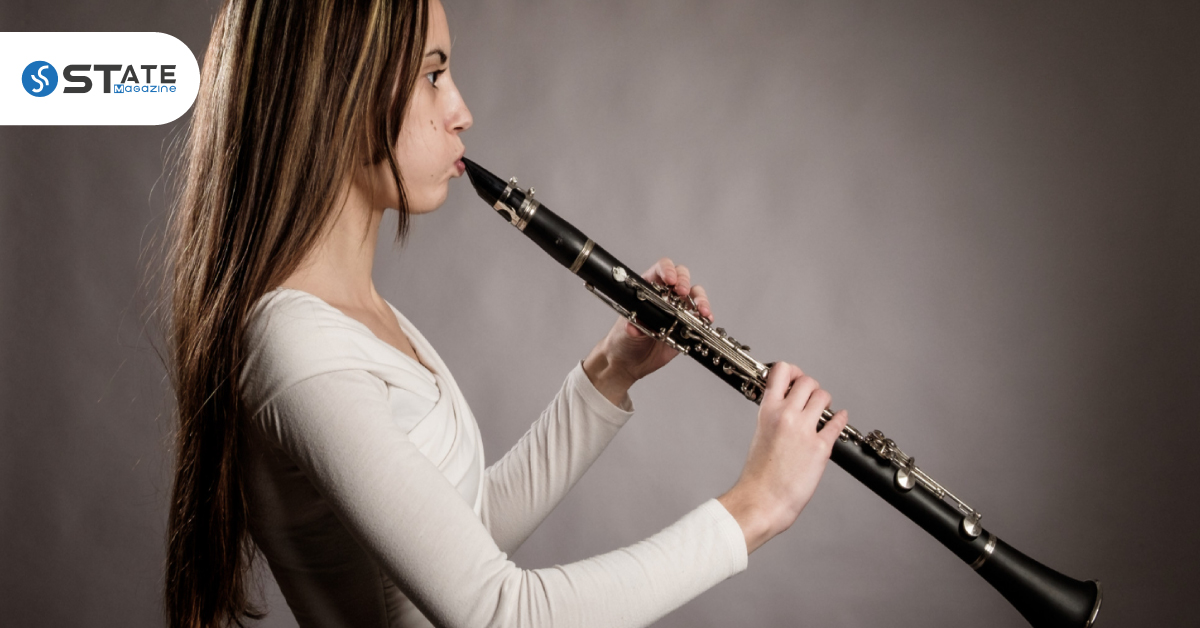Some clarinet brands to avoid are listed here with various problems in them. They have inconsistent tones, less longevity, and difficult playability. If you are a beginner, starting with such a low-quality clarinet would frustrate and disappoint you due to difficulty in playing. Some of these brands are difficult to be played even by professionals. Therefore, knowing these clarinet brands is necessary when looking for musical instruments.
List of Worst Clarinet Brands to Avoid
Contents
These are the worst clarinets that have been recognized due to issues in performance, durability, and quality of the build. It is necessary to avoid these models to get the best use of the money you invest.
1. Selmer CL211
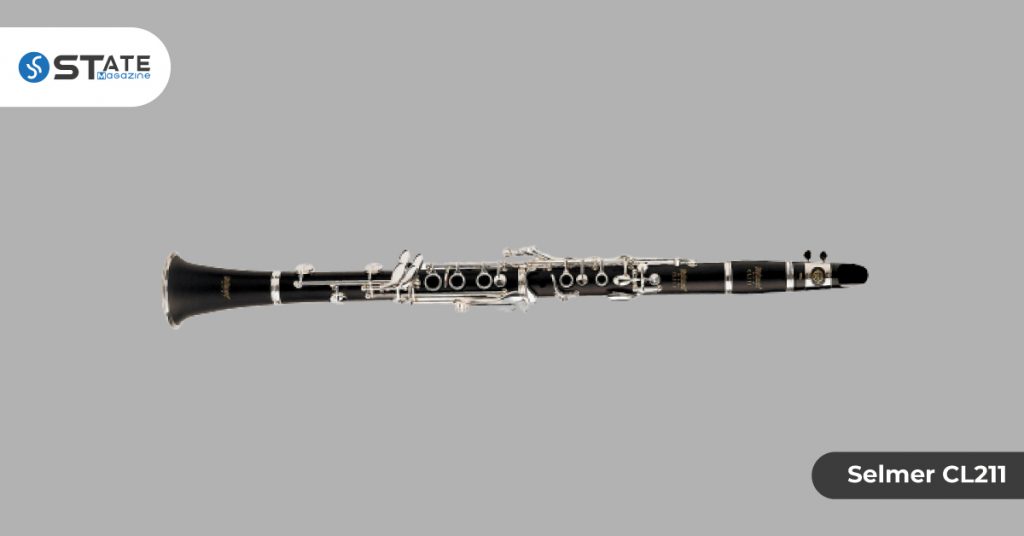
This model is preferred by many intermediate players, and the body is made of granadilla wood and has silver-plated keys. But some issues make this a worse choice.
Reasons to Avoid:
- Inconsistent tone breaks many times
- Needs regular cleaning
- The wooden body has less durability
2. Cecilio CT-480
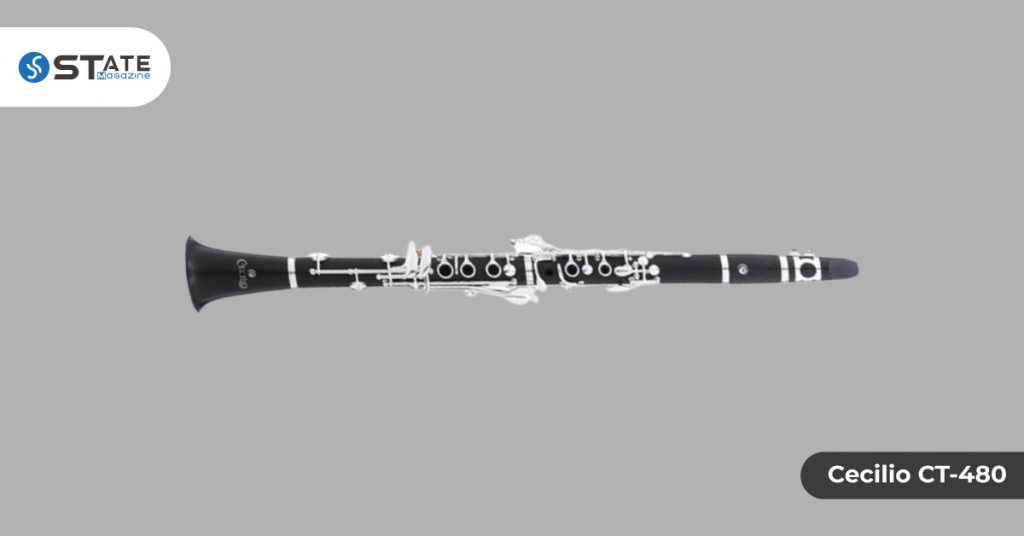
This is a black ebony wood clarinet with a decent tone for intermediate-level players. However, the following factors should be concerned before buying this model.
Reasons to Avoid:
- Too bright sound
- Mediocre tone
- Fragile wooden construction
- Low durability
- Quite expensive
3. Jupiter JCL700N
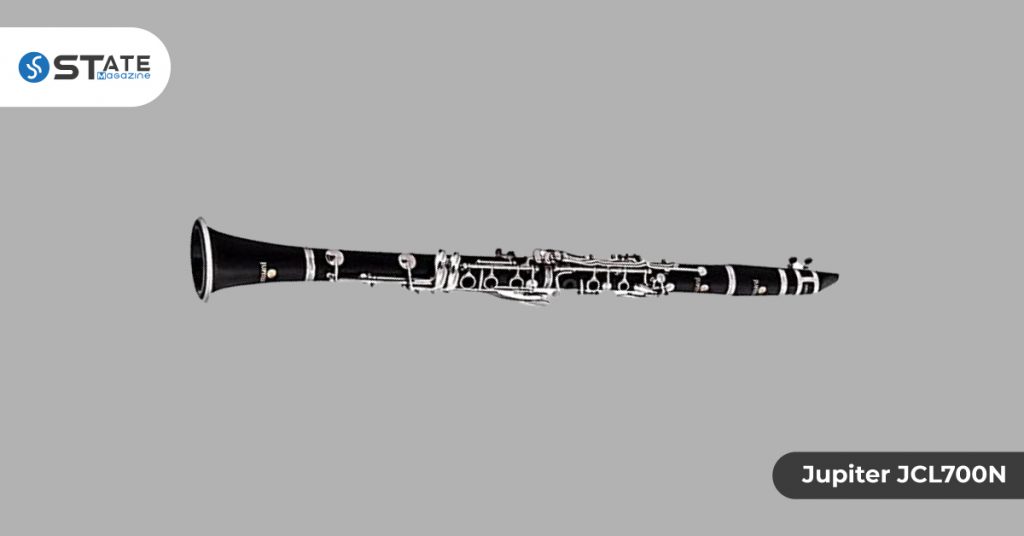
Despite being a famous brand for musical instruments, Jupiter JCL700N has failed to keep up the reliability of users. This is a plastic clarinet made of durable ABS resin. This instrument is easy to play and has a professional nature.
Reasons to Avoid:
- Poor sound quality
- Volume drops when playing
- Low build quality
- Keys fall out easily
- Cost not worth the quality
4. Mendini MCT
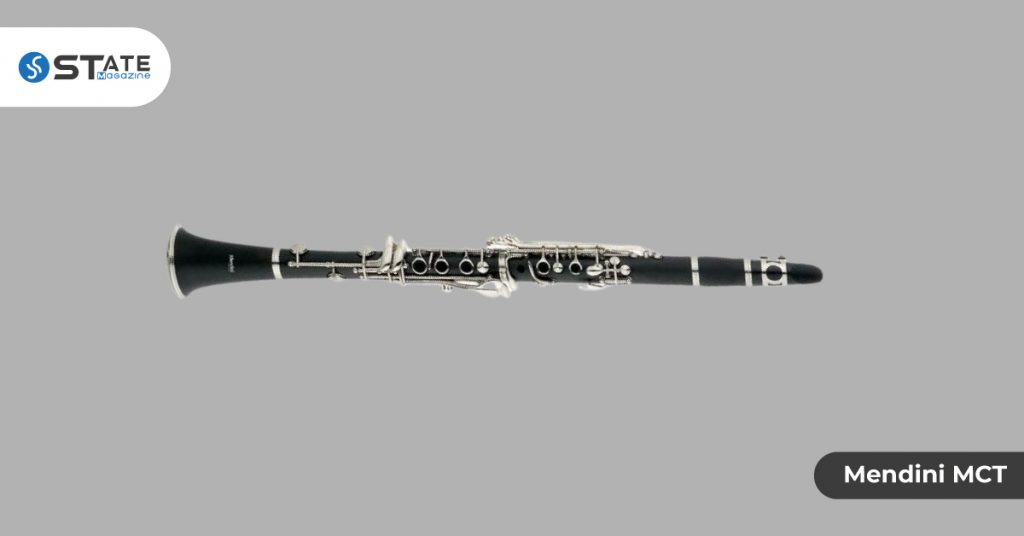
This is an ideal choice for students with a tight budget. It is constructed with ABS plastic and has a glossy body. These are some of the issues in this model.
Reasons to Avoid:
- Poor quality
- Not durable
- Fragile and breaks easily
- Starts losing sound after few months
5. Buffet B12
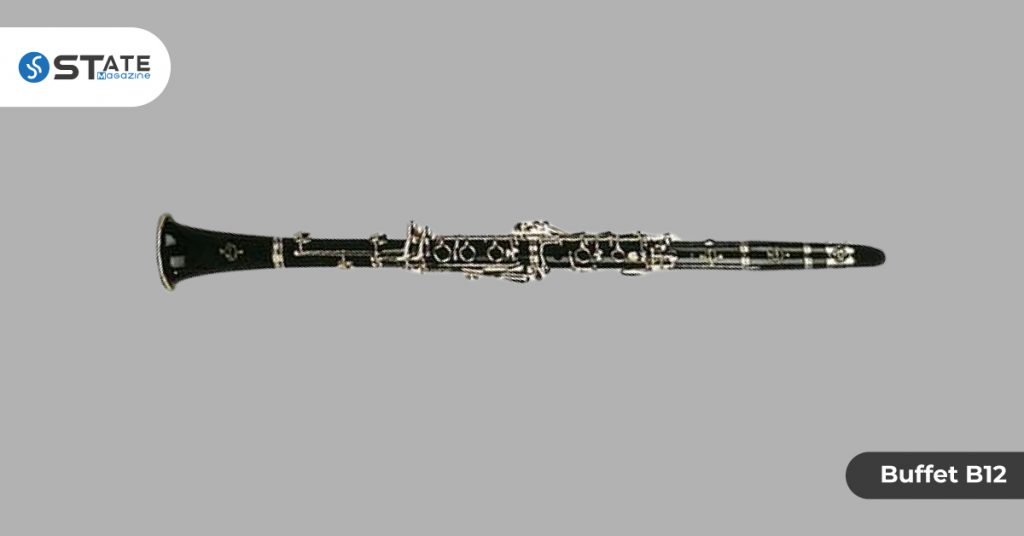
The buffet is a highly reputed manufacturer in the clarinet industry. They produce high-end clarinets with an excellent tone that lasts long. But this model is on the list of clarinet brands to avoid due to certain reasons.
Reasons to Avoid:
- Mediocre sound quality
- Inconsistent tone
- Very expensive
- Not worth investing
Recommended Clarinet Brands
You can improve your skills only if you have a good instrument to train with. Therefore, these recommended clarinet brands offer you this advantage of good quality to suit your budget.
1. Yamaha YCL-255 Standard Bb Clarinet
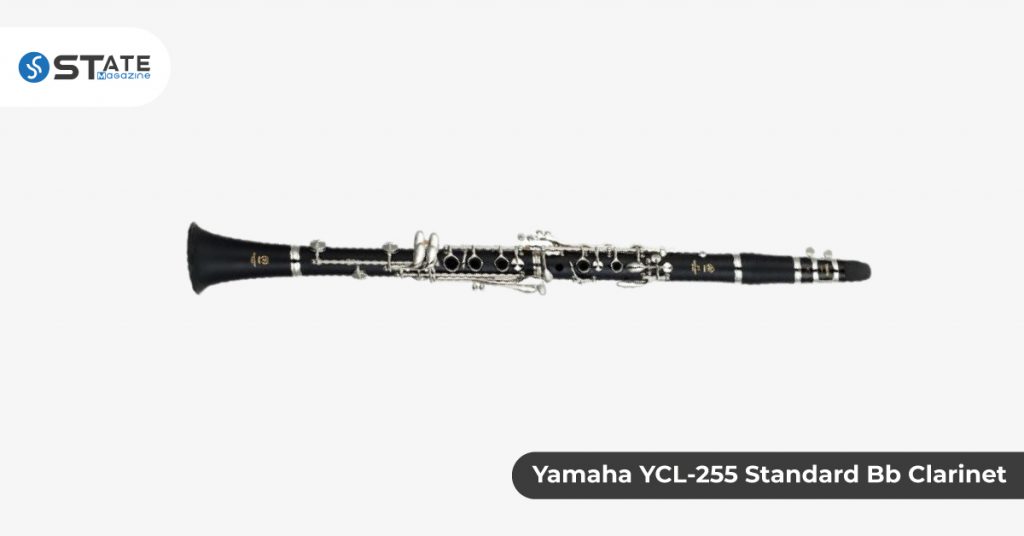
As Yamaha is a highly reputed musical instrument manufacturer, this model has the same reliability. It has a warmer tone when compared to wooden clarinets. It consists of matte ABS resin construction with a 56 mm barrel and nickel-plated key system that offers smooth sliding. Its construction suits all levels and is easy to handle due to its lightweight. The neck strap makes it suitable for players of any hand size.
Pros
- Warm and pulsation sound
- Adjustable thumb rest
- Resonance chamber to enhance the sound
- It has a Yamaha 4C mouthpiece
- High-quality key system
Cons
- Playing might be difficult for beginners
2. Hisonic Signature Series 2610 Bb Orchestra Clarinet
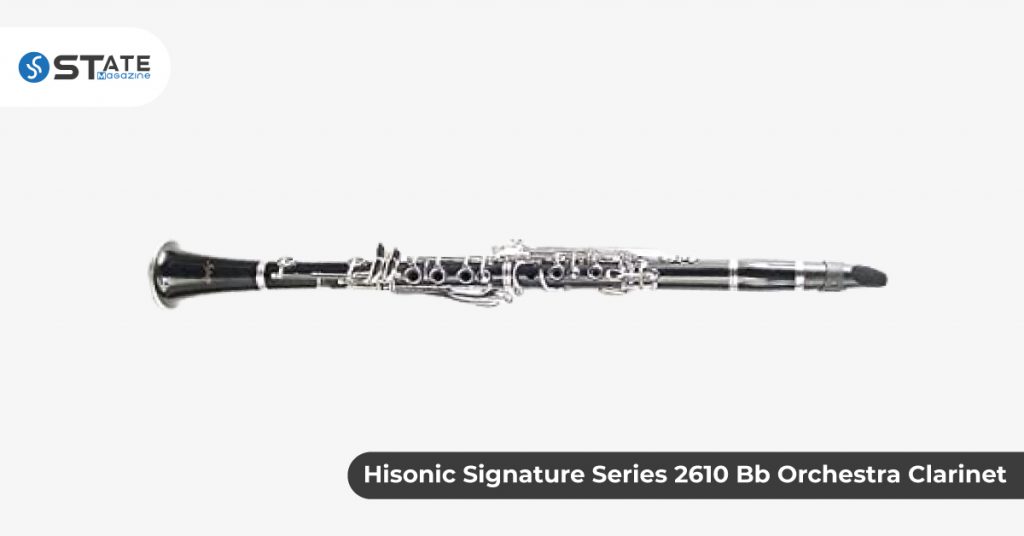
This is a B flat soprano clarinet used for orchestras, jazz, and even marching bands. It has a durable ebonite construction with silver nickel-plated keys. It can withstand moisture and damage than wooden clarinets and is hence suitable for outdoor performance.
Pros
- Durable due to ebonite construction
- High-quality silver keys
- Warm sound and sturdy construction
- It consists of a protective case and cork grease
Cons
- It might not be ideal for professionals
3. Lazarro 150-BK-LB-Flat Bp Clarinet
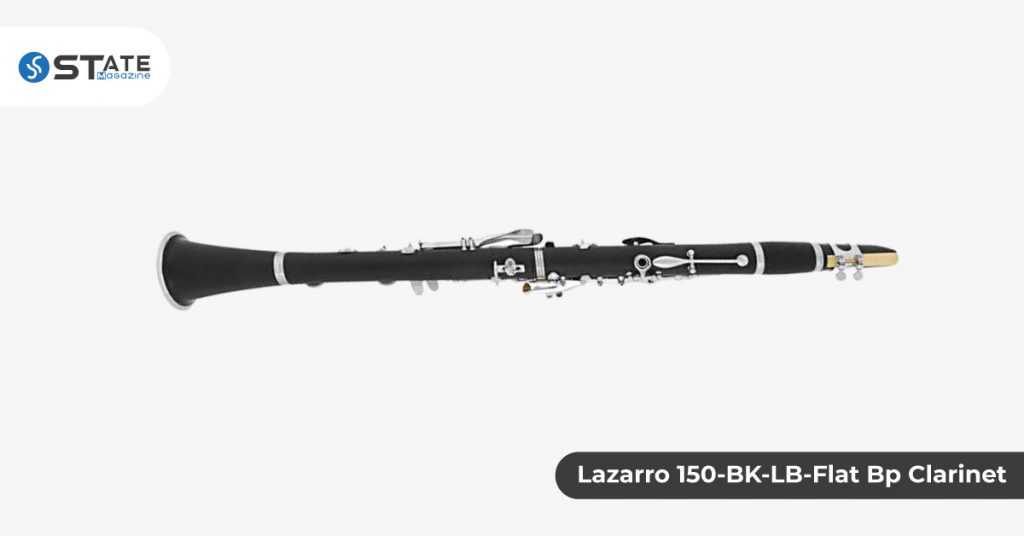
This clarinet is perfect for students and jazz players and offered at a reasonable price. It is available in many bright colors, and black instruments are made of a resin material. Colored ones are made with ABS plastic. The mouthpiece has eleven reeds, and additional accessories such as a fabric case, reeds holder, and cork grease are included. Keys and bell rings are made of silver.
Pros
- Worth the investment
- Suitable for learners
- Durable
- Rich and deep sound
Cons
- The included reeds might also have to be replaced
4. Mirage TTC50WA Bb Clarinet
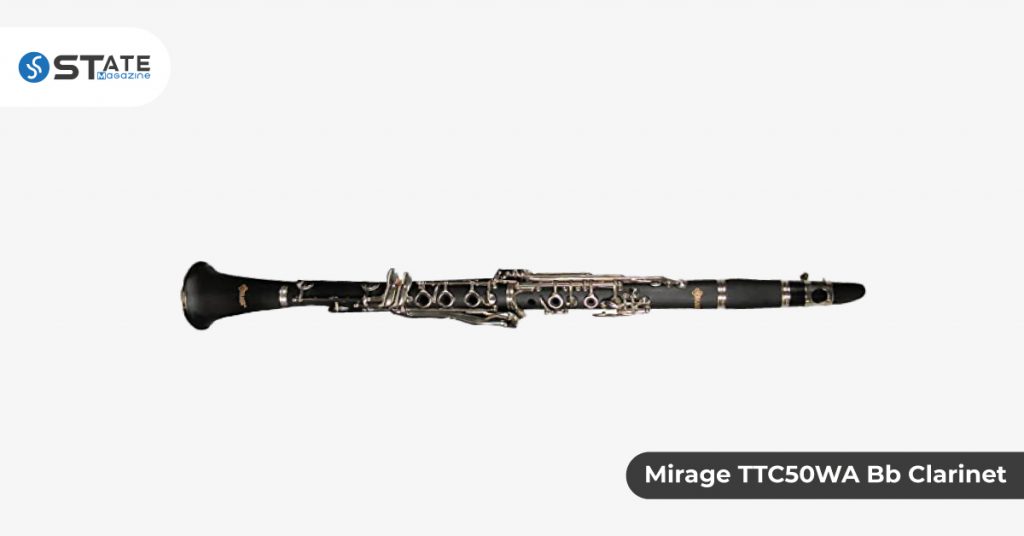
This clarinet is suitable for clarinetists who are to upgrade their instruments. This model has good sound quality and a durable ebony wood construction with silver nickel-plated keys. It includes a deluxe case with back straps and is suitable for playing in orchestras and bands.
Pros
- Sturdy construction and keys
- Classical appeal
- High-quality sound
- Ideal for intermediate players
Cons
- It might not be suitable for professional clarinetists
5. Glory B Flat Clarinet
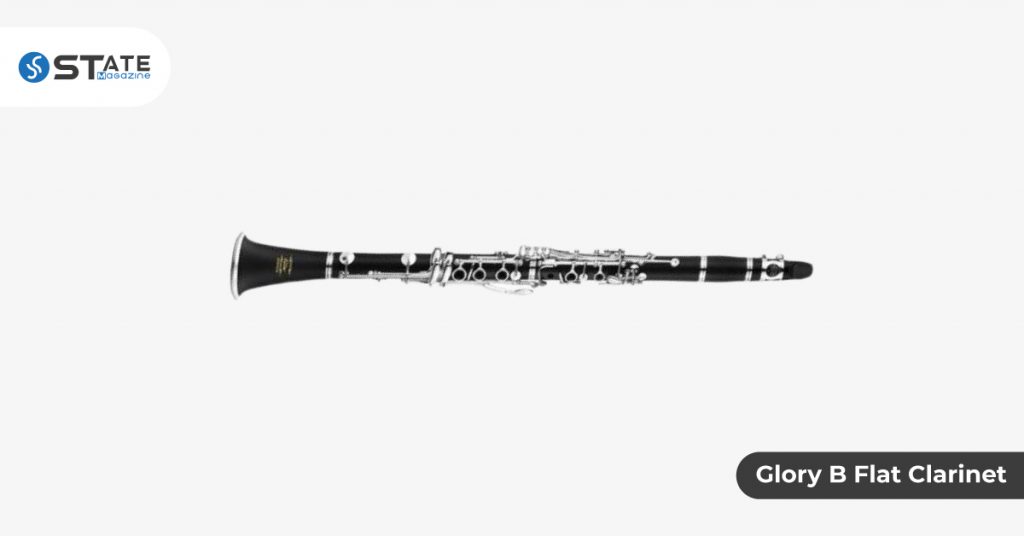
This clarinet offers you high-quality sound at an affordable price. It is constructed with ebonite and ABS. It has an adjustable thumb rest and nickel-plated keys. You would also get a hard-shell case with a second barrel and eleven reeds.
Pros
- Good sound quality
- Includes accessories
- Worth the investment
- Adjustable thumb rest
- Affordable
Cons
- Difficult to repair damaged components
- Mostly suitable for practicing only
Buyer’s Guide
The clarinet is a woodwind instrument with a warm tone that has versatile abilities to create different musical styles. They are mostly used for classical and jazz music. To choose the best instrument, you need to know the types and other additional features of clarinets.
Types of Clarinets
- B flat Clarinet: Mostly used by beginners to start as it is easy to play and learn.
- A Clarinet: Ideal for classical pieces.
- Contra-Alto and Contra-Bass Clarinets in the brass family: These are typically used for clarinet ensembles.
- E flat Clarinet in the soprano family: Suitable for intermediate and professional players. It is more challenging to play than B flat clarinets and has a deep sound.
Parts of a Clarinet
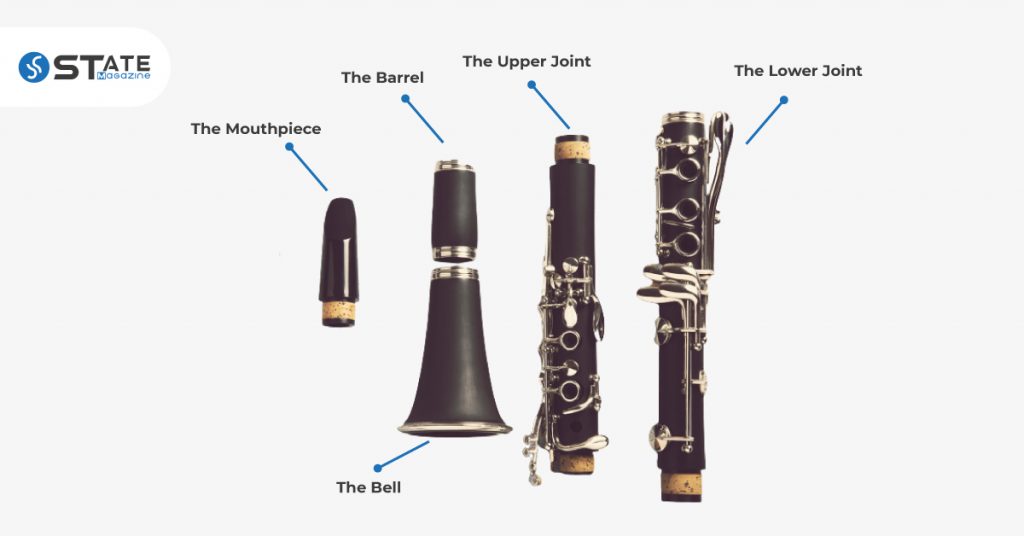
- The Mouthpiece: This is mostly made of ebonite which is hard rubber. It can also be made with plastic, metal, crystal, or glass.
- The Barrel: This is also known as the socket, and most clarinets come with a long and a short one. It is used to tune the clarinet and adapt the pitch to the other instruments.
- The Upper Joint: Located at the top of the midsection of the clarinet and contains the left-hand keys.
- The Lower Joint: Located at the bottom of the midsection of the clarinet and contains the right-hand keys. Sometimes these two pieces are contained as one part, but having two separate parts is easy for handling, transportation, and repairing.
- The Bell: This is the flared construction at the end of the clarinet designed for sound projection.
Construction Material
Clarinets can be made of either plastic or wood, and both have their pros and cons. Plastic is ideal for durability and is less vulnerable to damage and moisture. So it is mostly suitable for children and outdoor performances. But they do not produce the same sound quality as wooden clarinets.
African Blackwood, also known as Granadilla, is mostly used for wooden clarinets. It has a dark color, and the density is similar to ebony. Cork tenons are used to connect the parts, but cheaper instruments would use rubber rings instead.
Key systems are made with German silver and are coated with a layer of silver, gold, or nickel. This is most useful for effortless gliding. But silver layers might have fingerprints that are difficult to get rid of.
Reed Strength and Cut
Reed’s strengths vary from one to five, where five indicates the hardest, which produces the full and thick sound. Softer reeds are easier to play and suitable for beginners.
The reed cut is of two types, namely French-file and regular. A quicker response can be got from French files by are more expensive.
Size
The bore sizes of clarinets differ, and smaller bored instruments can be played easily. Therefore they are more suitable for beginners. Larger bored clarinets are preferred by jazz players as they offer enhanced pitch flexibility but are more challenging to play.
Cost
The cost of a clarinet would range from $50 to $3000 or more. But this would vary depending on the brand, material, and quality of the instrument. A high-quality student clarinet would cost around $400, and a professional clarinet costs around $1000 or more.
Frequently Asked Questions
Do clarinet reeds expire?
Reeds expire approximately in 6 months, but it would vary depending on the usage. If a clarinet is played regularly, then the clarinet would last only for 3 to 6 months.
Are wooden clarinets better than plastic?
Wooden clarinets have a darker and richer sound than plastic and have additional benefits such as precise tuning.
How long do wood clarinets last?
If properly maintained, these clarinets can even last for few decades.
How much does clarinet maintenance cost?
Deep cleaning of a clarinet would cost between $49 and $65, while a minor overhaul costs around $160 to $230.
Conclusion
Choosing a good clarinet would help you learn easily and develop skills. As there are many low-profile clarinet brands in the market, it is necessary to avoid these worst brands when purchasing. As you have learned about the important features and types of clarinet, now you can easily find your perfect clarinet. Also, make sure to go through the reviews and user feedback on the clarinet you chose.
If you are purchasing more musical instruments, you would also find these useful articles on Worst Trumpets and Ukulele Brands to Avoid.

